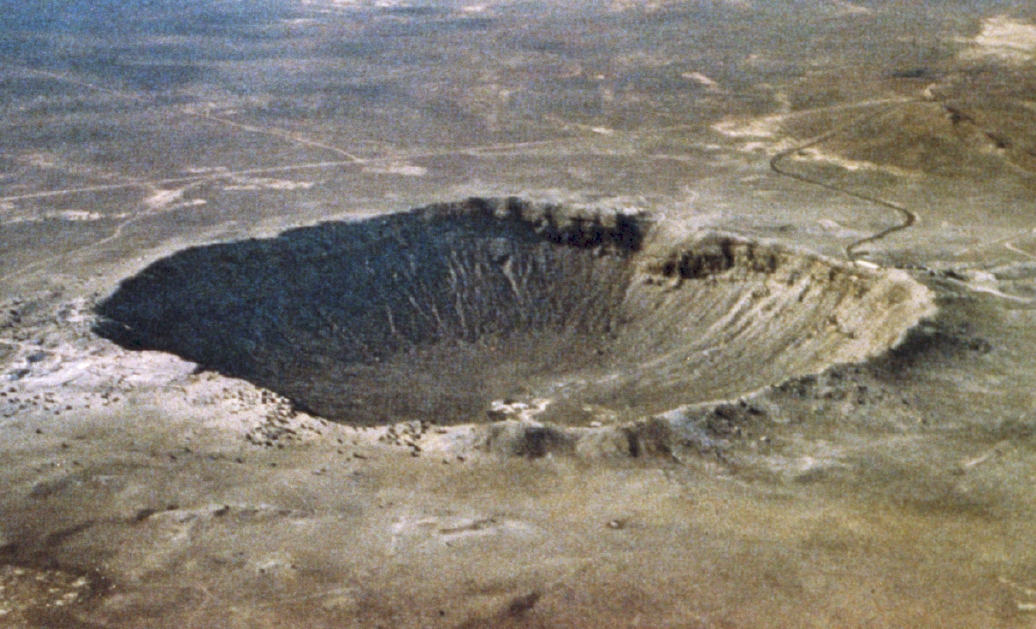Estinzioni di massa sfiorate, in Arizona…
Estinzioni di massa in arrivo per un ipotetico osservatore posto nelle vicinanze del Meteor Crater in Arizona; questi avrebbe visto una meteora brillante attraversare l’atmosfera con una luce in grado di rivaleggiare con il Sole. E poi che cosa accadde?
Un lampo accecante e una spaventosa onda d’urto si sprigionarono, prima che un fungo di polveri e vapori si innalzasse sinistro nell’atmosfera, mentre frammenti di materiale meteorico e di rocce ricadevano al solo fino a 12 chilometri di distanza dal luogo dell’impatto.
Poco o nulla rimase della vegetazione che fu rasa al suolo per molti chilometri, area all’interno della quale nessuna creatura animale riuscì a sopravvivere. Quando la densa nube di polveri scomparve, rimase sul terreno un nuovo cratere, che oggi ha un diametro di 1265 metri ed è profondo 174. All’inizio, in realtà, questa profondità si aggirava probabilmente intorno ai 2130 metri che l’erosione, nel corso del tempo, ha ridotto.
(Fine)
Puntata precedente @
English Version
An hypothetical observer would have seen a bright meteor crossing the atmosphere with a light that could rival the Sun.
A blinding flash and a frightening shock wave emanated, first a dust and vapor fungus rose left into the atmosphere, while fragments of meteoric material and rocks fell to only 12 kilometers away from the impact site .
Little or nothing remained of the vegetation that was razed to the ground for many kilometers, an area within which no animal creature could survive. When the dense cloud of dust disappeared, a new crater remained on the ground, which today has a diameter of 1265 meters and is 174 deep. At the beginning this depth was probably around 2130 meters, which the erosion has for during the reduced time.
(The end)
Latina versio (Latinorum)
Extinctio globalis. A splendida et hypothetica, videntem videre meteoron per atmosphaeram lux cum eo superare queunt Sole.Un Caeco effulsit, et horribili impetu fusi sunt fluctus invehitur, antequam pulveres in sinistra extulit fungus ce vapores in aere, et in unius ruentium lapidum fragmenta metallurgio materia XII volutpat dell’impatto. Pauco nihil reliquum est de multis herbam diruta volutpat area in qua nihil omnino creaturae verunt. Cum pulveris nubes densissima disparati sunt, manserunt in cratere in terra nova, quae nunc habet diametrum ac MCCLXV metris profundum altius 174. Superius hoc est probabiliter circa volantes MMCXXX metris, hoc est, quia super exesa reducta est.
(Finis)
Tratto da Calendario della Luna Verde
